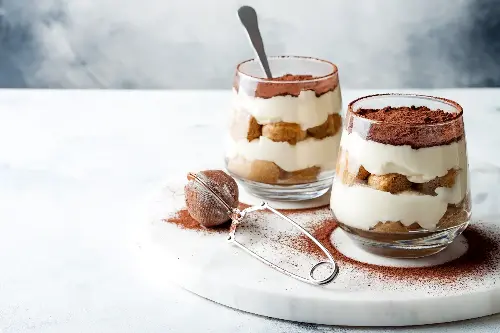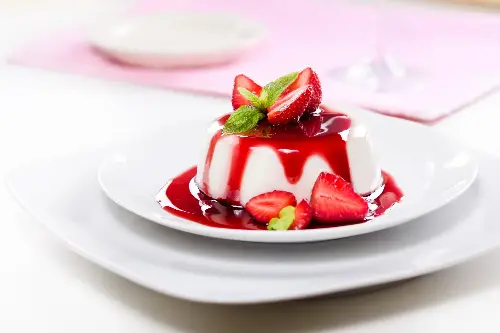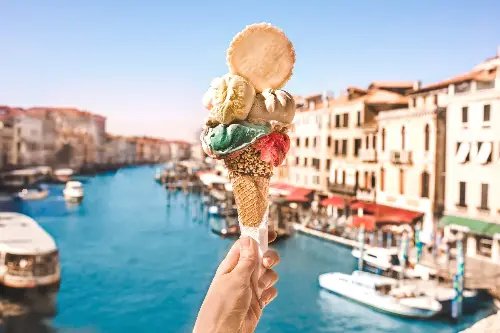Stepping onto Italian soil is akin to entering a world where culinary delights are as revered as the highest forms of art. Italian cuisine, with its rich flavours and comforting aromas, possesses an undeniable ability to evoke passion and love. For those with a sweet tooth, Italy’s dessert landscape offers a tapestry of tastes and stories, each as enchanting as the last. Let's savour the top four sweet Italian treats that stand as a testament to Italy's culinary magic.
Tiramisu: The Layers of Heaven

Perhaps no Italian dessert is as beloved or as internationally recognised as Tiramisu. A seductive layering of coffee-soaked savoiardi biscuits, nestled between a blanket of whipped mascarpone and a dusting of cocoa powder, this dessert finds its roots in the Veneto region. However, it has traversed oceans to capture the heart of dessert aficionados worldwide.
The name Tiramisu translates to "pick me up" or "cheer me up", an apt title for a dessert that is both uplifting and indulgent. Each mouthful promises a harmonious symphony of flavours, which are at once bold and nuanced. Anecdotal evidence suggests that this treat was conceived in the 1960s, but just like a true classic, it retains a timeless appeal.
Cannoli: The Sicilian Icon

Venture to the sun-drenched island of Sicily, and you will encounter an edible emblem of its rich culinary heritage: the Cannoli. Cannoli are tube-shaped shells of fried pastry dough, filled with a sweet, creamy mixture typically composed of ricotta cheese and often punctuated with chocolate chips, candied fruit, or pistachios.
The contrast between the crunchy exterior and the velvety filling makes for an irresistible bite. Originating as a Carnival treat, cannoli have become a year-round staple, symbolising Sicilian confectionery prowess. Legend has it that cannoli were first created within the walls of a harem as a symbol of fertility and have since become intertwined with the very fabric of Italian dessert culture.
Panna Cotta: The Elegant Custard

Simplicity often breeds elegance, and Panna Cotta is a perfect example of this maxim. Hailing from the northern Italian region of Piedmont, this dessert of sweetened cream thickened with gelatine and moulded into form is the epitome of understated sophistication.
The beauty of Panna Cotta lies in its versatility. The cream may be infused with a variety of flavourings, and the dessert is often served with a coulis of berries, caramel, chocolate, or seasonal fruits. The texture is velvety, and the taste, when executed well, is pure and comforting. Panna Cotta, which means 'cooked cream', has an allure that lies in its delicate wobble and its smooth caress on the palate – a testament to the dessert's delicate balance.
Gelato: The Quintessence of Frozen Delights

Mention Italian desserts and Gelato immediately springs to mind. More than just ice cream, Gelato is a cornerstone of Italian dessert culture. It is distinguished by its dense texture, intense flavour, and lower fat content when compared to its American counterpart.
Artisanal Gelato makers, or gelatieri, take great pride in their craft, often using seasonal fruits, high-quality nuts, and carefully selected ingredients. Whether scooped into a cone or cup, Gelato provides a refreshing respite from Italy's balmy climes. The endless flavour possibilities, from classic hazelnut to inventive salted caramel and ricotta fig, make Gelato a perennial favourite among locals and tourists alike.
The Italian approach to dessert is one that eschews complexity for depth of flavour and quality of ingredients. These four sweet treats – Tiramisu, Cannoli, Panna Cotta, and Gelato – are ambassadors of Italy's culinary prowess, offering a delightful window into the rich tapestry of Italian culture. To experience these desserts in their native charm is to fall in love, not just with the flavours, but with the passion and history they embody. Every bite is a journey through time, a taste of tradition, and a celebration of sweet, Italian artistry.
